order
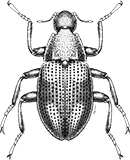
Coleoptera
“Adult Beetles”

Coleoptera
“Larval Beetles”

Diptera
“True Flies”

Ephemeroptera
“Mayflies”

Hemiptera
“True Bugs”

Lepidoptera
“Aquatic Caterpillars, Snout Moths”

Megaloptera
“Alderflies, Dobsonflies, and Fishflies”
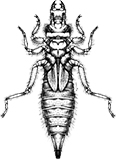
Odonata
“Dragonflies and Damselflies”

Plecoptera
“Stoneflies”

Trichoptera
“Caddisflies”
family
Culicidae
genus
Aedes
“Mosquitoes”
Genus Overview
87 species in North America. Mostly introduced. Larvae can live in small amounts of water such as tree holes, rock holes or tires. Larval development can be short in about 7-10 days.
Characteristics
POLLUTION TOLERANCE
Mid-Atlantic: 8 and higher
0 = least tolerant, 10 = most tolerant
FEEDING HABITS
Collector / Filterer
Collector / Gatherer
Collector / Gatherer
MOVEMENT
Diver
Swimmer
Swimmer
DISTRIBUTION
Widespread (east of the Rocky Mtns.)
HABITAT
Lentic-littoral
Diagnostic Characters
order
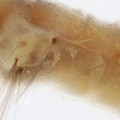
Legs Absent
family
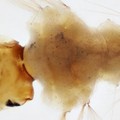
Fused Thoracic Segments
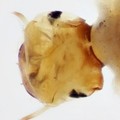
Head Capsule Complete and Exposed
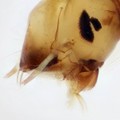
Mandibles Moving Horizontally

Slender Antennae with Short Setae
+ Expanded Character List
Order:
Wings and wing pads absent. Eye spots sometimes visible, but compound eyes absent. Segmented legs absent, but sometimes fleshy prolegs present. Sometimes with distinct head, often without head or with head drawn deeply into thorax. Body flattened, cylindrical, or maggot-like.
Family:
head is distinct and fully exposed; there are prominent mouth brushes on each side of the head; the thoracic segments are fused, indistinguishable from each other, and wider than the head or abdomen.
Genus:
Last abdominal segment with a siphon tube, head as wide as long, siphon without a pair of basal tufts, dorsal saddle of anal segment not complete, dorsal saddle without long spines. Adults are very distinctive by their black and white markings.
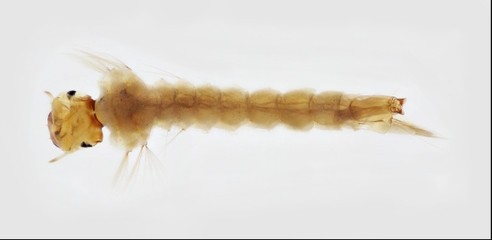
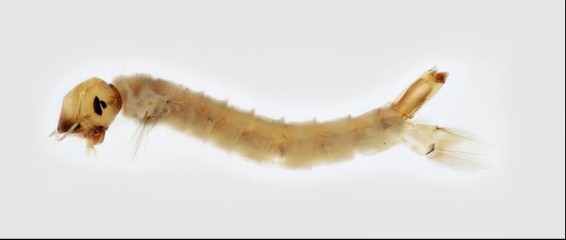
Dorsal
Lateral



